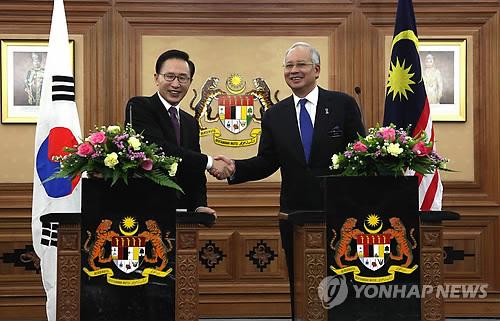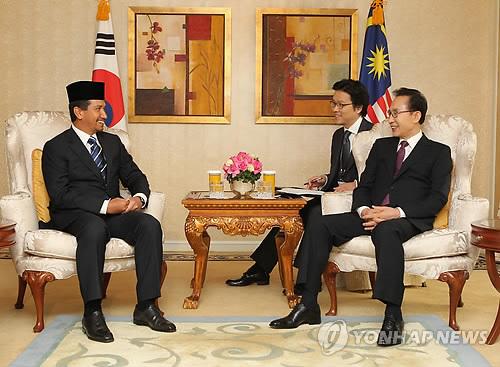Core Tip: At present in the world, have a clear intention to buy F-35 developed a non-partner countries, only Japan and Israel. Both countries are Asian countries. So, after reading the Japanese to buy F-35 after the news, give our first feeling is that the next decade, Asia is likely to become the largest market for F-35.
Data Figure: U.S. F-35 fighter prototype flight test
Xinhua reported last November 12, sources said Japan is ready to buy the latest model of the U.S. F-35 fighters. Before this, there is news that the Israeli F-35 orders to buy aircraft. In this way, the Israeli F35 fighter planes to be purchased the first non-development partner.
Currently worldwide, there is a clear intention to buy F-35 F-35 developed a non-partner countries, only Japan and Israel. Both countries are Asian countries. So, after reading the Japanese to buy F-35 after the news, give our first feeling is that the next decade, Asia is likely to become the largest market for F-35.
Why Asia will become the largest market for F-35
Why Asia will become the largest market for F-35 does, the problem to two reasons.One is the United States, that is, the seller, the other Asian countries, that is, the buyer.
From the U.S. point of view, F-35 Although the United States the most advanced fifth-generation fighter, but in fact the aircraft was initially developed for export. In other words, is to be used to make money.
United States is now an economic slump in the domestic state. Obama, after defeat in the midterm elections, economic issues are so hard, even over the objections of other countries, a lot of harm to others under the "strong medicine." For example, open the printing press to print money mad.
In fact, now within the world economy is the most discussed, the United States and India $ 600,000,000,000 to the "tickets." Then this 600 billion U.S. dollars of the "tickets" will definitely lead to the rapid depreciation of the dollar, and where those dollars regardless of rushed on where the economy will be a huge shock.
As for economic issues, under such a big hearted, it can make money as a thing, F-35 fighters to become a United States should focus on the recent selling.
The United States of Israel before we sell F-35 can be seen. Israel does not want to buy the first F-35, but the U.S. training and preparation of a 600 billion Saudi arms purchase orders, Saudi Arabia has the latest model of F-15, Israel immediately sit still, so under the F-35 orders.
Japan is not going to buy before the F-35, because the F-35 for Japan, not particularly suitable. The aircraft from the design point of view, the number one mission is to conduct in-depth attack, not air intercept operations. For Japan, its first task is to homeland defense, is the air defense intercept operations, and so Japan is initially proposed to purchase F-22. Meanwhile, Japan is also developing its own Five machine "mind.
Now Japan has finally started to purchase F-35's movement, which for Japan is not a small loss.
Since the last century in Japan since the late 50s, the first production aircraft suspended their operations. Before that, Japan even though the United States used F-86, F-4, F-16, but they are in domestic production. In other words, F-86, F-4 is a patent from the United States in domestic production. F-15, the Japanese and their own in the F-16 developed based on the F-2.
If you want to buy F-35, then it means that Japan's domestic production of advanced fighter aircraft operations, there will be a suspension. For Japan, this is an absolutely unwilling to accept things, but also to show why the Japanese want to buy the last F-35's intentions?
I'm sure the United States actively selling factor. In other words, the seller (the U.S.) is actively want to sell F-35. Through the sale of F-35, to earn more profits and create more jobs, to change the status of the current downturn in the domestic economy to contribute.
Then the seller has a positive market, we go back and look at the buyer. F-35 fighter is actually the first delineation of the first buyers, mainly European countries, or the NATO allies. F-35 developed in Britain, Germany and a series of countries, which are mostly NATO countries. This joint development, joint production methods, the first should be said that the sales market set in the these countries.
After the Cold War, Europe should be said that in a "Western Front" situation. And now also in Europe's economic downturn, and even Britain and France have begun to put forward this proposal to the combined carrier. In other words, "Zan Gelia has begun to wear a pair of pants too poor together," and this time, you come up with a lot of money to Europe to buy F-35 is clearly unrealistic.
In addition to children of a rich Middle East, can now be said to be complex and that if the F-35 advanced fighters to rush forward, Israel will certainly be a strong rebound, and the chaos in the region, will be intensified.
From this perspective, Asia has become the best selling F-35 market. Now, Japan, Israel, have begun to buy F-35 specific actions, in this action, the series will definitely affect the follow-up action.
For example, if equipped with the Japanese Self-Defense Force F-35, South Korea, will also buy F-35.
India and the United States now share cooperation in the military go farther and farther, in India the so-called advanced medium-range fighter aircraft tender, Americans strongly recommended in the F-16, F-18, but India has said that the possible "European EF -2000 "fighter is more suitable for them. At the same time, some of the Indian Air Force officials also said that since the F-16 why not buy direct buy F-35 it? In other words, the Indians actually want to buy F-35, and even buy advanced European fighters in this way to pressure the United States, the United States to sell India F-35, obviously this is a big buyer.
In fact, Asia may buy F-35, or a future sale of F-35 market, but also far more than Israel, Japan, Korea and India. Among countries in Southeast Asia, many countries are the United States before the use of F-16, then when faced with these aircraft the case of updating, F-35 is clearly also a tempting choice.
Talked about Asia, we can not forget a buyer, is China's Taiwan. The desire of Taiwan to buy advanced fighter planes has been very high, and now, for the case of the two countries, out of the situation across the Taiwan Strait, or to a greater extent it is affected by pressure from mainland China, the United States with F-16 are do not dare to sell to Taiwan.
However, if the change in the situation the situation in the Taiwan Strait, if the change in the situation of Sino-US relations, or even said that if the U.S. economy continues to decline, continues to slump, the U.S. under greater economic pressure, the United States will not sell the F-35 Taiwan? I am afraid no one would definitely answer "no", more people chose "will." In so doing, F-35 in the final sales throughout Asia are likely to reach hundreds of planes, even to one thousand of the scale. This is enough to become Asia's largest F-35 export markets.
There is also need for additional reference point, why the next decade, Asia will become the largest market for F-35? What is the meaning of the next decade? Currently, F-35 have not yet entered volume production status, the real into the batch, I am afraid we have to wait 1-2 years. That is, the next decade, F-35 is the first of its foreign sales. As you know, the first batch of aircraft, "fresh" market, certainly the most expensive price to buy F-35 countries and regions in Asia is likely to get the most expensive of the first export of the F-35.
F-35 will bring to Asia?
Arms are used to fight. F-35 sold large quantities in Asia, Asia is definitely a curse not a blessing. It is very possible arms race in Asia and further said that will not cause an arms race among Asian nations it? This is what we can think directly.
In fact, F-35 sales in Asia will bring another layer to the Asian influence.
From the 70s of last century, the Asian economies can be said that wind and water, first with Japan's GDP catching up with the United States, after the Asian Tigers have, and then after China's rapid economic rise. These countries and regions, the rapid economic development, the surface of other countries in the world would agree with taking a tone, saying that the world economy contributed to the development; but to look back and everyone's thoughts on their respective different. Some top-ranking power, inevitably do not make whispered: Asia this trend continues, the future is not it will affect me in the world "leadership."
So we see that in Asia the process of rapid economic development, a series of events.First, the so-called "Market Garden Agreement", forcing the yen, the Japanese economic malaise years; then, the Asian financial crisis, the Southeast Asian country's economy fell from a peak of sudden low; Next, China's rapid economic development, but will not have such a man-made external interference and influence? This interference and influence in what ways will be adopted to happen?
We may be seeing a currency war, for example, want you to appreciate, and so a series of questions; have a trade war, trade barriers, requires you to expand the import markets. In fact, as arms sales to the impact of the Asian economy is also not underestimate the.
We could make a simple statement, 1000 F-35 mean? It means more than 100 billion dollars, get the 1000 billion U.S. dollars, for the United States may be hundreds of thousands or even millions of employment opportunities. For Asia, if Japan to buy 200 F-35, it is enough to offset the export of one million cars; if South Korea imports 100 of the F-35, it is enough to offset the export of millions of tons of ship cargo; if Taiwan to purchase 100 F-35, means a year to pay hundreds of thousands created by GDP; if India is to buy 150 F-35, the equivalent of millions of people a year in GDP.
Meanwhile, F-35 large in Asia, the United States control over the strategic situation in Asia will quickly improve. From this, F-35 once the really large quantities in the next decade in Asia, then he obviously is not a good thing for Asian countries.









 DTN NEWS ON TWITTER (30 SUBJECTS)
DTN NEWS ON TWITTER (30 SUBJECTS)
